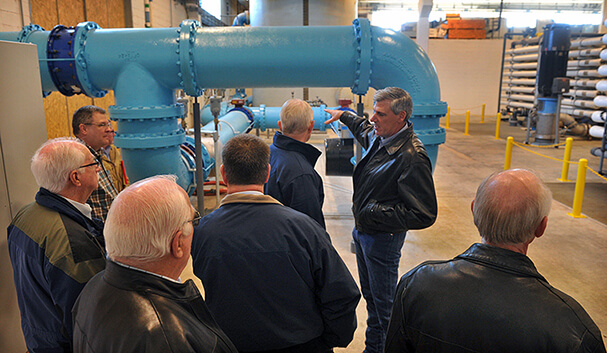TrojanUVSwiftECT System Allows Wichita Falls To Extend Direct Potable Reuse Project For Drought Relief
In May 2014, Wichita Falls, Texas found itself under a stage-5 drought catastrophe ranking during the second worst drought in the city’s history. The lakes supplying water to the city were at less than 25% capacity, resulting in restrictions on outside irrigation and residents and businesses were encouraged to conserve water as much as possible. Despite reducing water supply by one-third, water was still expected to run out within two years under the drought conditions.

Wichita Falls city officials developed a short-term temporary solution to the problem – to treat and purify wastewater so it could be reintroduced into the potable water supply. The city built a 13-mile pipeline from the wastewater treatment plant to the drinking water plant, installed advanced treatment equipment including membranes and reverses osmosis, and began extensive testing by the Texas Commission on Environmental Quality (TCEQ) to ensure the water was meeting treatment goals. The project went online in July 2014 under a temporary emergency permit serving a population of just over 100,000 using a 50-50 blend of treated wastewater and lake water.
As the temporary emergency permit timeline came to an end, the city requested an extension on the project. In order for the direct potable reuse (DPR) project to be extended, the Texas Commission on Environmental Quality required the installation of a UV treatment process to act as an additional barrier for Cryptosporidium inactivation. All other DPR projects that have been approved in Texas have included UV as part of the treatment process.

Wichita Falls Plant Tour. Photo courtesy of the Wichita Falls Times Record News.
A TrojanUVSwift®ECT system arrived in Wichita Falls in late December 2014 in order to support the city and its DPR project, which was at risk of being forced offline by TCEQ unless an additional UV treatment barrier was installed. By February of 2015, Wichita Falls had commissioned the TrojanUVSwiftECT, allowing the city to receive a one-year extension on its DPR project, versus a six-month extension without UV treatment.
Along with a similar project in Big Spring, Texas, Wichita Falls is Trojan’s second UV installation and the state’s second site for DPR. The project has received global attention as representatives from several countries have visited the city’s treatment plant to learn more about the technology that makes DPR a viable treatment option for wastewater reuse.
About the TrojanUVSwiftECT
The TrojanUVSwiftECT provides year-round treatment and simultaneous treatment for seasonal taste & odor events. It’s validated in accordance with the United States Environmental Protection Agency UV Disinfection Guidance Manual for up to 4-log inactivation of chlorine-resistant pathogens Cryptosporidium and Giardia.
Featured Posts
La primera planta piloto de reutilización de agua potable en Europa utiliza Trojan UV AOP
Trojan se enorgullece de formar parte del proyecto de purificación de agua AIGUANEIX del Consorci d'Aigües Costa Brava Girona Trojan Technologies se complace en compartir que formamos parte del proyecto piloto de reutilización de agua AIGUANEIX de la Diputació de...
First Potable Reuse Demo Plant in Europe uses Trojan UV AOP
Trojan is proudly part of the Consorci d'Aigües Costa Brava Girona’s AIGUANEIX water purification project Trojan Technologies is excited to share that we’re part of Diputació de Girona and Consorci d'Aigües Costa Brava Girona’s AIGUANEIX water reuse pilot project at...
Trojan Technologies Opens First U.S. Distribution Facility in Grand Rapids, Michigan
On March 3, 2025, Trojan Technologies celebrated the grand opening of its first U.S. distribution center in Grand Rapids, Michigan. This strategic expansion underscores the company's dedication to enhancing customer experience and optimizing the delivery of its...







